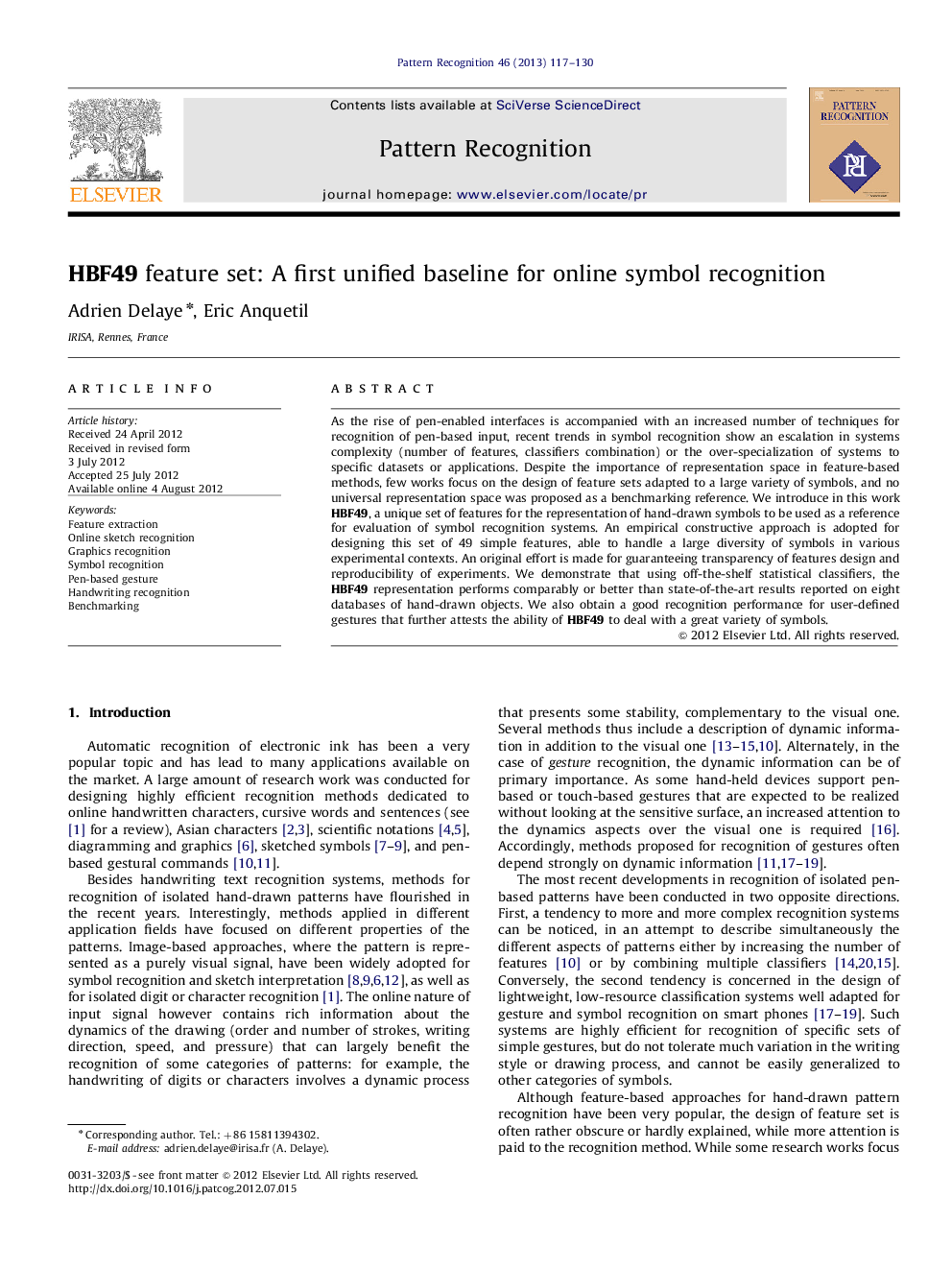| Article ID | Journal | Published Year | Pages | File Type |
|---|---|---|---|---|
| 530594 | Pattern Recognition | 2013 | 14 Pages |
As the rise of pen-enabled interfaces is accompanied with an increased number of techniques for recognition of pen-based input, recent trends in symbol recognition show an escalation in systems complexity (number of features, classifiers combination) or the over-specialization of systems to specific datasets or applications. Despite the importance of representation space in feature-based methods, few works focus on the design of feature sets adapted to a large variety of symbols, and no universal representation space was proposed as a benchmarking reference. We introduce in this work HBF49, a unique set of features for the representation of hand-drawn symbols to be used as a reference for evaluation of symbol recognition systems. An empirical constructive approach is adopted for designing this set of 49 simple features, able to handle a large diversity of symbols in various experimental contexts. An original effort is made for guaranteeing transparency of features design and reproducibility of experiments. We demonstrate that using off-the-shelf statistical classifiers, the HBF49 representation performs comparably or better than state-of-the-art results reported on eight databases of hand-drawn objects. We also obtain a good recognition performance for user-defined gestures that further attests the ability of HBF49 to deal with a great variety of symbols.
► A feature set for benchmarking online symbol recognition systems is introduced. ► By a constructive approach, we cover all aspect of symbols necessary for universality. ► The representation handles a very high diversity of symbols. ► Results with standard classifier reach performances comparable to state-of-the-art. ► Results are reproducible (feature design, protocols, classifiers, and datasets).
